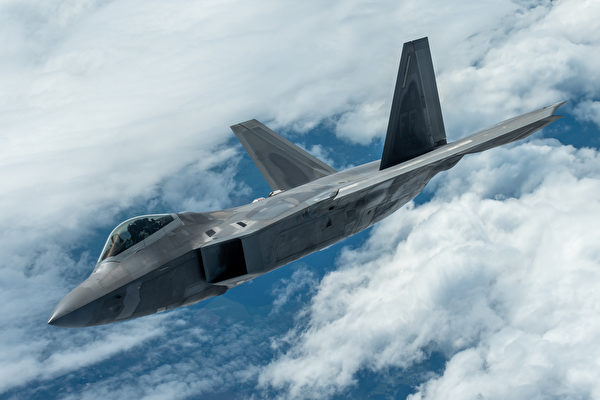50 years after its first test flight, the F-16 Fighting Falcon remains a cornerstone of the US Air Force and the most popular fighter jet globally. The F-16 has pioneered new technologies and continues to be a powerful and cost-effective aircraft, constantly undergoing upgrades. It has become a paradigm of fourth-generation aircraft.
Reaching 50 years of service, not to mention production, for a frontline fighter jet is no easy feat, yet since its first test flight in early 1974, the F-16 has been flying for over five decades. With 4,500 units sold and 3,100 still in service across 25 countries and regions from Norway to Chile, Morocco to Taiwan, the US Air Force alone had over 800 F-16s in service in 2023, rightfully earning its title as the world’s most popular fighter jet.
Designed as a small, lightweight, and highly agile air combat fighter, the F-16 has taken on increasingly diverse roles, from ground attacks to anti-ship, reconnaissance, and even chasing down ground-to-air missile launchers. Since 2015, it has remained the most numerous military fixed-wing aircraft in the world.
Not only dominating the military fighter jet market, the F-16 has fundamentally altered the design approach for military aircraft, solidifying its place in aviation history.
On January 20, 1974, pilot Phil Oestricher flew the General Dynamics YF-16 prototype for the first time at Edwards Air Force Base in California. What was supposed to be a simple high-speed taxi test turned into a near-disastrous first flight as the aircraft veered out of control on the ground, with the left wing and right tail hitting the runway. Oestricher had to quickly make the decision to take off to prevent a crash.
Through his skillful flying, Oestricher averted disaster, helping pave the way for one of the most successful aircraft ever created. Over 4,600 F-16s have been rolled out in the fifty years since, showing no signs of production stopping.
The design of this aircraft has had a lasting impact on today’s commercial aviation, introducing technologies now commonplace among passenger airlines.
US veteran and aviation journalist Alex Hollings told Business Insider, “The F-16 represents a fundamental shift in fighter design philosophy.”
He explained that the new concept viewed air-to-air combat, often called dogfighting, not as an art but as a quantifiable science requiring aircraft to efficiently exchange kinetic and potential energy for optimal maneuverability.
To achieve faster, more aerobatic, and energy-efficient maneuvering, the F-16 was designed as the first aerodynamically unstable aircraft, making it highly agile and capable of withstanding up to 9g (9 times the force of gravity) maneuvers even when fully fueled.
In order to help pilots stay conscious during high-gravity turns, the cockpit seat of the F-16 is angled to mitigate some effects on the pilot.
However, to control this instability without requiring constant management of control surfaces by the pilot, another innovation was needed: the fly-by-wire control system.
Before this, fighter pilots used manual controls to manage the aircraft’s control surfaces, but with an unstable aircraft, constant manual corrections were impractical. Hence, the introduction of the fly-by-wire control system, allowing a flight control computer to manage the aircraft’s control surfaces.
“In the era when fighter jets were just tools for pilots, the F-16’s fly-by-wire system represented the harmonization of a pilot’s skills and technical capabilities, making it a mainstay in fighter jet design since then,” Hollings remarked.
Initially built as an air superiority platform, the F-16 has been utilized as a multi-role fighter since 1981, capable of performing various missions including electronic warfare and air-to-ground support.
Despite its lengthy service life, the F-16 remains a pillar of the US Air Force and global air forces, having participating in numerous conflicts like the Gulf War, Afghanistan war, and Iraq war.
In air combat, the F-16 boasts a record of 76 kills with only one loss (some sources claim two losses), showcasing its formidable air combat capabilities. Its renowned agility has also proven effective against ground-to-air threats, with one US F-16 successfully evading six surface-to-air missiles during Operation Desert Storm.
In the 21st century, the F-16 has evolved into an equally essential ground-attack aircraft, a role not originally envisioned by its designers in the early 1970s. This adaptability has enabled the F-16 to undertake a growing number of missions, increasing its appeal to air forces worldwide. “Where there’s conflict, there’s potential for an F-16 to be involved,” noted Tim Robinson, military aviation expert at the Royal Aeronautical Society, in an interview with the BBC.
Throughout its service, the F-16 has undergone numerous upgrades to keep it current and evolving.
The latest version of this aircraft is the Block 70/72. In addition to other upgrades, this variant is equipped with enhanced avionics equipment and targeting systems, a new Viper Shield electronic warfare suite, and a radar similar to those on the F-22 and F-35.
Hollings added that indeed, the design DNA of the F-16 has to some extent been integrated into all modern fighter jets, including the F-35, designed as a successor to the Fighting Falcon.

